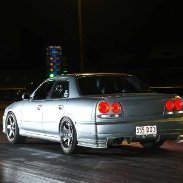Bennet Water System?
Announcements
-
Similar Content
-
Latest Posts
-
Maybe they'll look to do a bunch of presales to help inject some cash fast for their financial issues...
-
Does it also misfire equally when revving? Josh is very correct in what you should do. The coilpack harness wiring loom itself is a known problem due to its age and the number of heat cycles it has gone through. Throwing parts at a vehicle to diagnose the issue isn't a smart or good way to do it. Secondly, you may have a bad coil pack, you pop replacements in, they fix that issue, but messing with the harness breaks it, so the issue persists. So now you think "well it wasn't the coil packs" and have to continue chasing your tail, potentially swapping back in your shit coil packs and returning the good ones (yes, I've seen people do this because 'it wasn't the problem' and they want to save money). And suddenly, you've got two issues with the same symptoms... Diagnose, don't use the spare parts shotgun.
-
Well the articals keep saying a Q50s (Skyline in Japan) with a new Manual gearbox. I like the talk about the new looks with the round tail lights. I hope they bring back the retro look like they did with the Z
-
Off the back of feedback we have decided to mix up this next Motorkhana at Avalon to have some targeted skills practice for beginners to advanced. Saturday 6th September 2025 8:30am Capped 26 entries Standard Entry Fee: $89 Members Entry Fee: $55 (SAU Victoria Only) Entries Close: Friday 5th February Where: 55 beach road Avalon. https://maps.app.goo.gl/HNUE3EuNue3sJxh38 Entries: Limited to 26 entrants (Passengers allowed over the age of 14 with a signed disclaimer and same safety gear) Disclaimer: Download Please electronically sign and email to [email protected] or print and hand in and Driver Sign In. To compete in this event you will require A valid AASA General Speed licence or (Day license via the AASA Website for $50) MA Licenses are no longer accepted by AASA https://aasa.com.au/ A helmet, long sleeve clothing and a 1KG mounted fire extinguisher recommended (But not Mandatory). Further details within Supp Regs on the enty link. Entry Link > https://www.sauvic.com.au/entry/deca/20250906 You can bring and have a passenger in the car but they need to comply to the same safety and clothing as driver. Bring your car and get to battle others, win, lose or draw. I can guarantee you will have lots of fun. Any questions email [email protected] Entry List: 1.Anna S 2. Luke S 3. Jesse Givens-Lamb 4. Luca Stamatescu 5. Madeleine Stamatescu
-









Recommended Posts
Create an account or sign in to comment
You need to be a member in order to leave a comment
Create an account
Sign up for a new account in our community. It's easy!
Register a new accountSign in
Already have an account? Sign in here.
Sign In Now